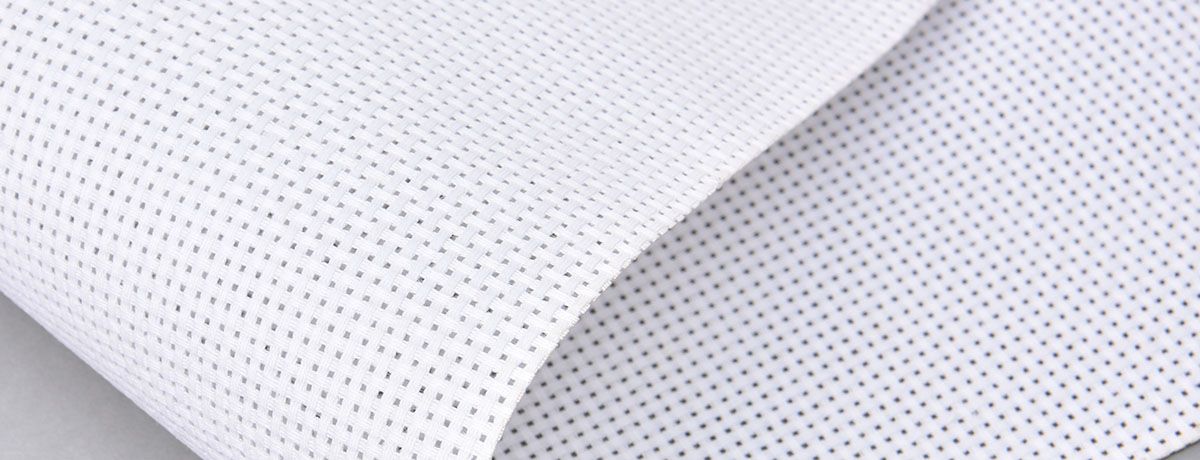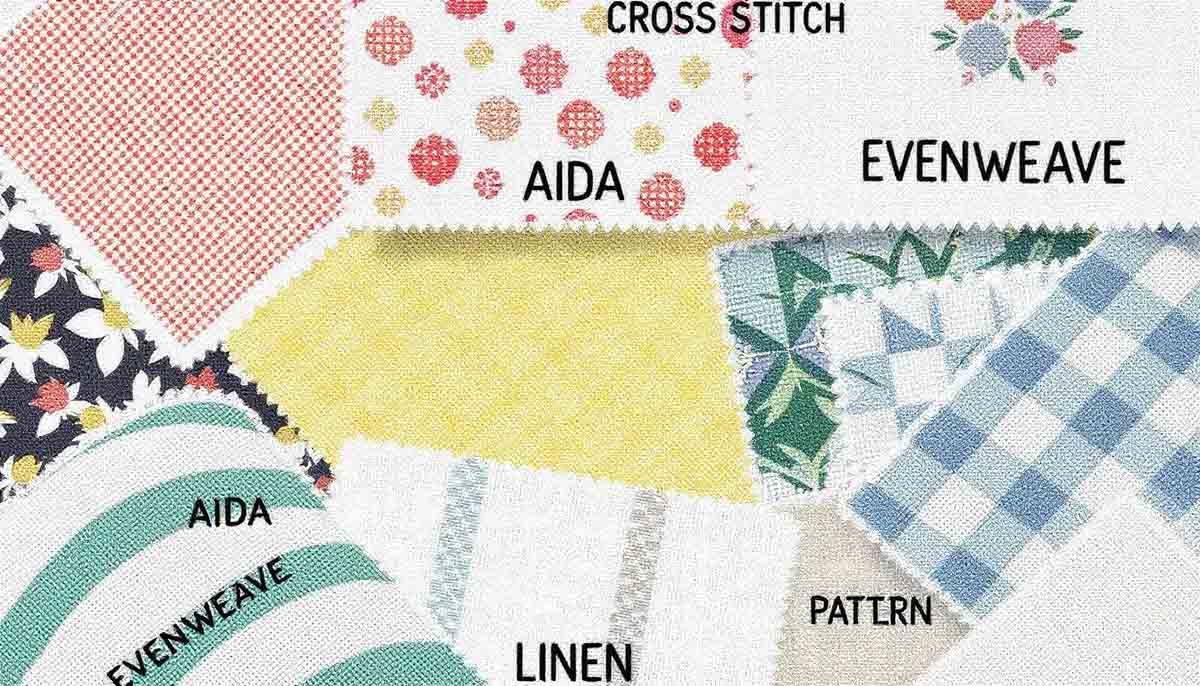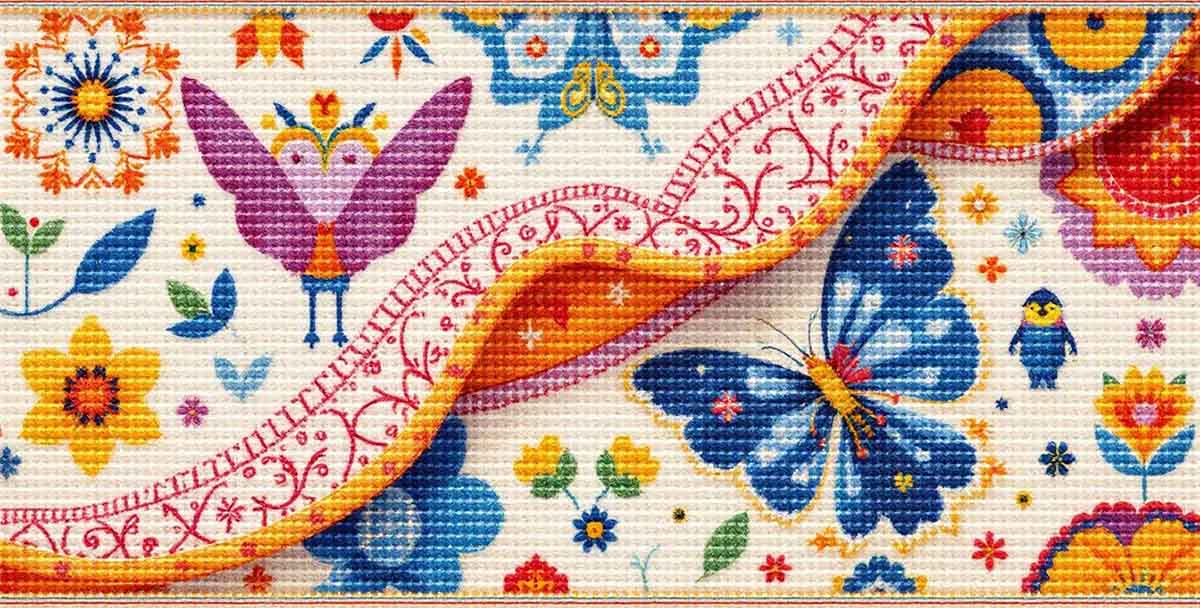Choosing the Best Count Cross Stitch Fabric for Your Project

Choosing the right count cross stitch fabric is essential for your project’s success. Fabric count, which refers to the stitches per inch, determines the detail and size of your design. In this article, we will explain fabric counts, and guide you in selecting the best one for your needs, along with discussing types of fabrics like Aida, even weave, and linen.
Key Takeaways
-
Fabric count is crucial in cross stitch, affecting detail and size; higher counts yield more detail.
-
Common fabric types include Aida for beginners, even weave for a smooth transition, and linen for advanced projects.
-
Proper care and storage of fabrics prolong their life; avoid plastic bags and store them flat to prevent damage.
Understanding Cross Stitch Fabric Count

Fabric count in cross stitch measures how many stitches fit in a one-inch square of fabric. This count influences the detail and the overall size of your finished design. A higher fabric count results in more stitches per inch, creating a finer and more detailed design.
Measure the fabric count by placing two pins one inch apart on the fabric and counting the number of holes or squares within that space. This gives you the fabric’s count, helping you understand how many stitches will fit in each inch and achieve the desired design size and accuracy in your cross stitch projects.
Factors such as the dyeing process and potential inaccuracies in the stated count can determine the accuracy of your fabric count. Double-check your materials to ensure they meet your project’s requirements.
Types of Cross Stitch Fabrics

Several types of cross stitch fabrics are available, each with unique characteristics. The most common types are Aida, even weave, and linen.
Aida cloth is a favorite among beginners and experienced cross stitchers alike. Made from 100% cotton, it features evenly spaced holes that make uniform stitching a breeze. Its grid structure is particularly user-friendly, helping stitchers easily follow their super easy patterns.
Even-weave fabrics, crafted from a blend of fibers, ensure consistent thread thickness and spacing. This makes them ideal for transitioning from Aida to a more refined fabric, providing a smooth texture and helping achieve a more elegant and delicate appearance in your design.
Linen, derived from flax, is known for its variable thread thickness and irregular spacing. Although it may require more skill, linen offers a rustic and sophisticated look to your projects and threads. Choose the fabric type that best aligns with your project’s needs.
How to Choose the Right Count for Your Project
Selecting the right fabric count involves considering personal preference, project complexity, and stitch visibility. A beginner often finds it easier to work with fabrics that have larger holes, as they are easier to see and work with. A great starting point is the 14 count Aida, the most common size for beginners. Understanding the basics of fabric count can also help in making the right choice.
Evenweave, with its uniform texture, is suitable for those transitioning to finer fabrics and serves as a good bridge between Aida and more complex fabrics like linen. Experienced stitchers often prefer higher counts such as 16 or 18 Aida or even-weave linen, depending on the design intention.
Consider the size needle you’ll need:
-
Smaller needles are required for higher count fabrics due to the smaller holes.
-
Larger needles are suitable for lower count fabrics.
-
Online calculators can assist in selecting the accurate fabric size for your project.
Common Fabric Counts and Their Uses
Fabric count indicates the number of holes per inch and typically ranges from 7 to 40 in one direction. Each count has a specific picture of uses, so choose the right one for your project.
14 count Aida is a popular choice, offering a balance between ease of use and design detail. It’s ideal for beginners and provides enough detail for most cross stitch patterns. For more detailed designs, 16 count Aida is a great option as it enables smaller squares and finer details.
Experienced stitchers often opt for higher count fabrics like 18 count Aida, allowing for more intricate designs. Key points to consider include:
-
Higher counts mean smaller stitches and more detailed final designs.
-
Choosing the right count fabric depends on your skill level.
-
The complexity of your project also influences fabric count choice.
Impact of Fabric Count on Design Size

The fabric count significantly impacts the size of your finished design. Higher fabric counts result in smaller finished designs, as more stitches fit into each inch of fabric. If aiming for a more detailed and compact design, a higher fabric count or different count fabric is preferable.
Consider the overall dimensions of your project when determining the fabric count needed. For example, stitching on 28 count even-weave will produce a piece equivalent in size to one stitched on 14 count Aida. Use the formula: size in inches x fabric count = total stitches; then divide by the new count.
The complete size may not always match the stated size, so double-check your calculations to ensure your project does not go wrong and turns out as expected.
Storing and Caring for Your Cross Stitch Fabric
Proper storage and care of your cross stitch fabric maintain its quality and longevity. Store cross stitch pieces flat rather than folded to prevent creases, keeping your fabric smooth and ready for future projects.
Avoid using plastic bags for storing cross stitch fabric, as they can trap moisture and cause damage. Use acid-free paper to wrap your fabric, ensuring it remains safe from discoloration and other potential issues.
Proper storage and maintenance techniques prolong the life of your cross stitch fabric, ensuring it remains beautiful and ready for your next project.
Choosing Colors for Your Cross Stitch Fabric
Selecting the right color for your cross stitch fabric can significantly impact the overall look of your design. Ivory provides a timeless background for a variety of patterns, while antique white offers a soft alternative, falling between bright white and ivory in color.
Grey is another excellent option, providing a softer alternative to black and adding subtle elegance to your design without overpowering your stitches’ colors. Hand-dyed cross stitch fabric can create a unique and appealing background for those looking to add a special touch to their projects.
Experienced stitchers often choose fabrics with a design that complements their patterns. Whether opting for classic colors or more adventurous hues, the right fabric color enhances the visual appeal of your cross stitch project.
Using Hand-Dyed Cross Stitch Fabrics
Hand-dyed fabrics offer a unique and personalized touch to your cross stitch projects, with design stitched elements. Each piece features distinctive colors and patterns, ensuring no two projects look the same. This individuality allows for personalized artistic expression in your cross stitching.
The dyeing process for hand-dyed fabrics often involves special techniques contributing to their unique appearance. However, using hand-dyed fabrics can add complexity to the stitching process due to variations in dye patterns, making it challenging to follow traditional cross stitch patterns accurately.
Despite the added complexity, many stitchers find the unique look of hand-dyed fabrics well worth the effort. They add a special touch to your projects that can’t be replicated with standard fabrics, highlighting the difference in quality and appearance.
Getting Started with Your Cross Stitch Project
Starting a cross stitch project requires a few basic supplies: fabric, needle, thread, and a hoop or frame. Embroidery floss, essential for creating stitches, is available in various colors, with popular brands including DMC and Anchor. An embroidery hoop or frame helps maintain fabric tension, ensuring even stitching.
Organizational tools, such as floss organizers or sewing boxes, help keep your embroidery supplies sorted and accessible. Good lighting, ideally from a specialized lamp for crafting, reduces eye strain and enhances visibility during stitching.
The first step in starting a cross stitch project is choosing your fabric. Once selected, gather your supplies, and you’re ready to start stitching. With the right materials and a bit of patience, you’ll be on your way to creating a beautiful cross stitch project.
Summary
Choosing the right cross stitch fabric is essential for a successful project. From understanding fabric counts to selecting the appropriate type and color of fabric, each decision plays a crucial role in the final outcome. Proper storage and care of your fabric ensure its longevity and quality for future projects.
In conclusion, whether you’re a beginner or an experienced stitcher, taking the time to choose the best fabric for your project will enhance your cross stitching experience. So, grab your needles and threads, and start your next cross stitch project with confidence!
Frequently Asked Questions
How do I measure the fabric count?
To measure fabric count, simply place two pins one inch apart on the fabric and count the number of holes or squares within that inch. This will give you a clear idea of the fabric's density!
What is the best fabric for beginners?
The best fabric for beginners is 14 count Aida because it's easy to work with and strikes a good balance in detail. You'll find it really accommodating as you start your stitching journey!
How does fabric count affect the size of my finished design?
Fabric count definitely impacts your finished design size—higher counts mean smaller designs since more stitches fit into each inch. So, if you want a bigger design, opt for a lower fabric count!
How should I store my cross stitch fabric?
To keep your cross stitch fabric looking great, store it flat instead of folded to avoid creases, and steer clear of plastic bags to protect it from moisture.
What are the benefits of using hand-dyed cross stitch fabrics?
Using hand-dyed cross stitch fabrics gives your projects a unique flair with vibrant colors and patterns, making each piece truly one-of-a-kind. This personal touch elevates your artistry and enhances the overall appeal of your work.
Contact MH
MH offer count cross stitch fabric, feel free to reach out to us for more details or inquiries. We're here to help!


